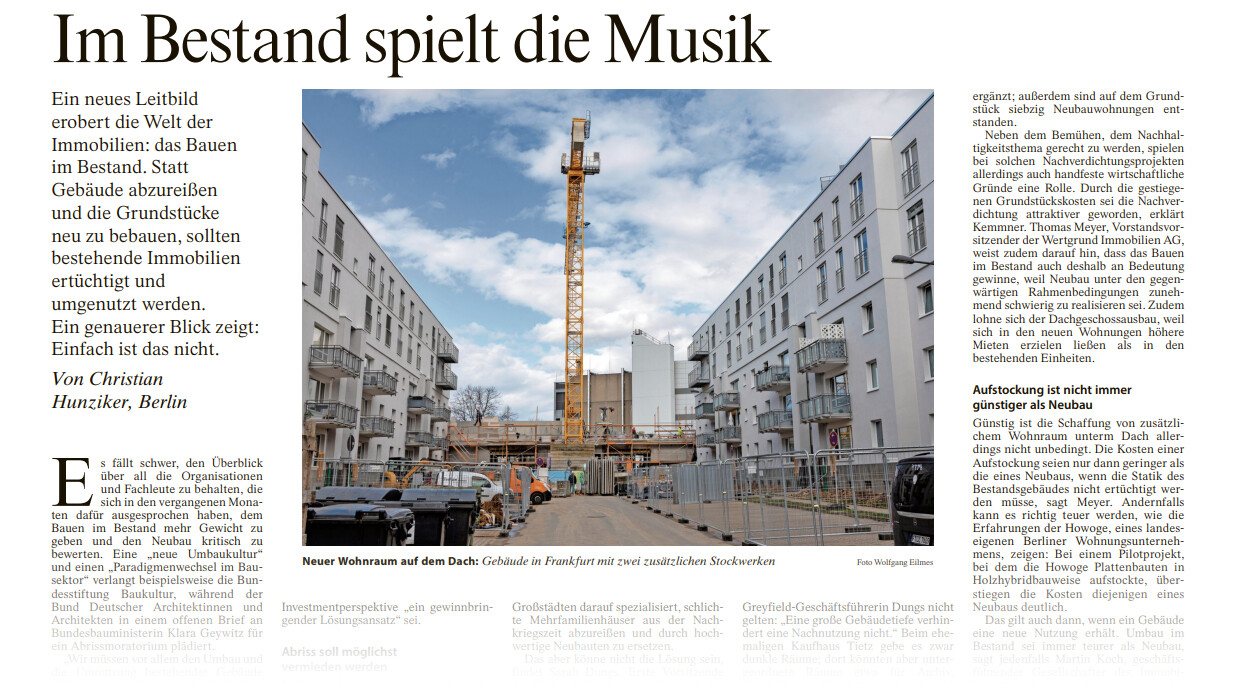

The Frankfurter Allgemeine Zeitung devotes a full-page article to the topic of “Building in existing buildings”. This refers to the renovation, upgrading and conversion of existing buildings, which are still too often demolished and replaced by new buildings. Various institutions and personalities are therefore calling on politicians to work towards a “new restructuring culture”. This is ecologically necessary, as new construction generates a high level of “grey emissions”. In the residential segment, examples of projects are given in which modernization and energy-saving renovation were successfully combined with densification. Additional living space could be gained by adding floors and expanding the attic. However, conversion and densification are not always more cost-effective than demolition and new construction, and there are bureaucratic hurdles that make such measures more difficult.
Comment from Dominik Schott
“There is no question that we need to focus more strongly than before on the diverse potential of the existing buildings. Especially in view of the CO2 emissions already installed, converting existing buildings often makes more sense than building new ones. Also with regard to the politically promoted premise of “internal development before external development”, the development of existing buildings should in many cases be given priority over new construction in order to prevent urban sprawl. But the truth is that no matter how important and sensible many existing renovations may be, in some cases they are counterproductive and do more harm to the climate than they are beneficial. If too much capacity and resources have to be used, then revitalization no longer makes sense at some point. It remains a case-by-case assessment that requires many years of experience.”

Board of Directors & Head of Asset Management
d.i.i. Deutsche Invest Immobilien AG
